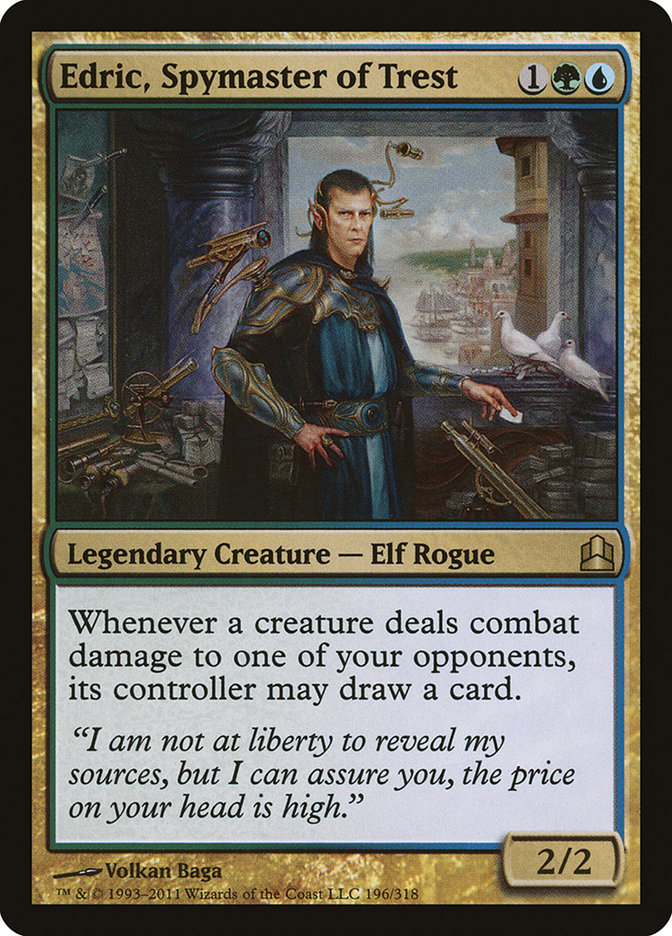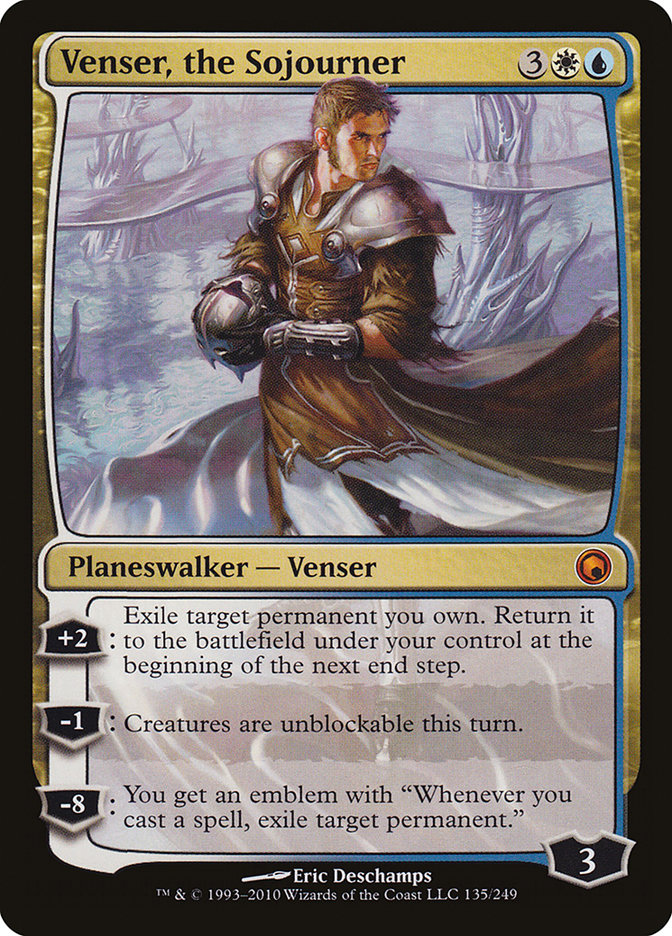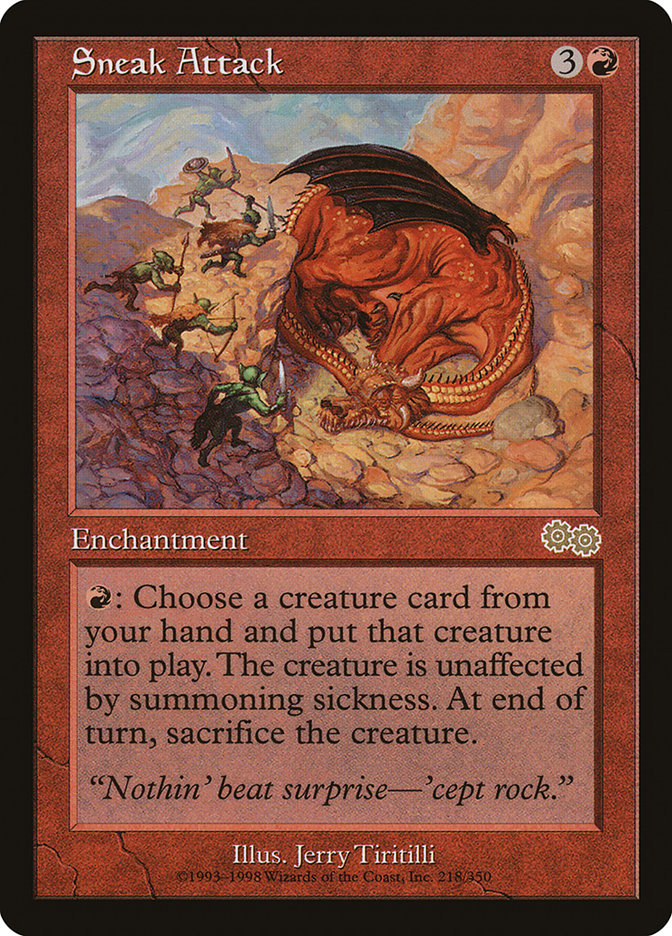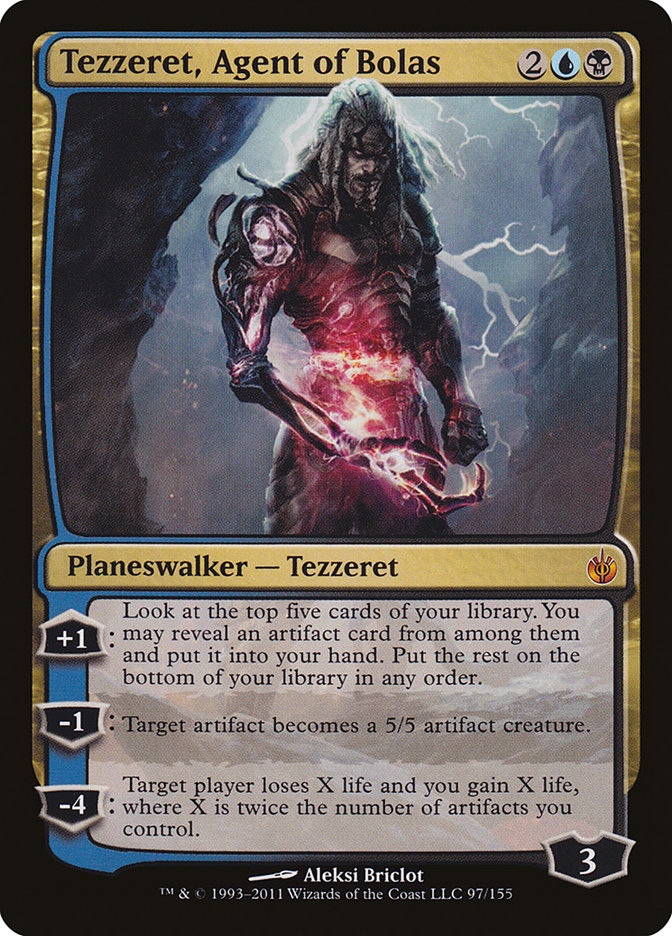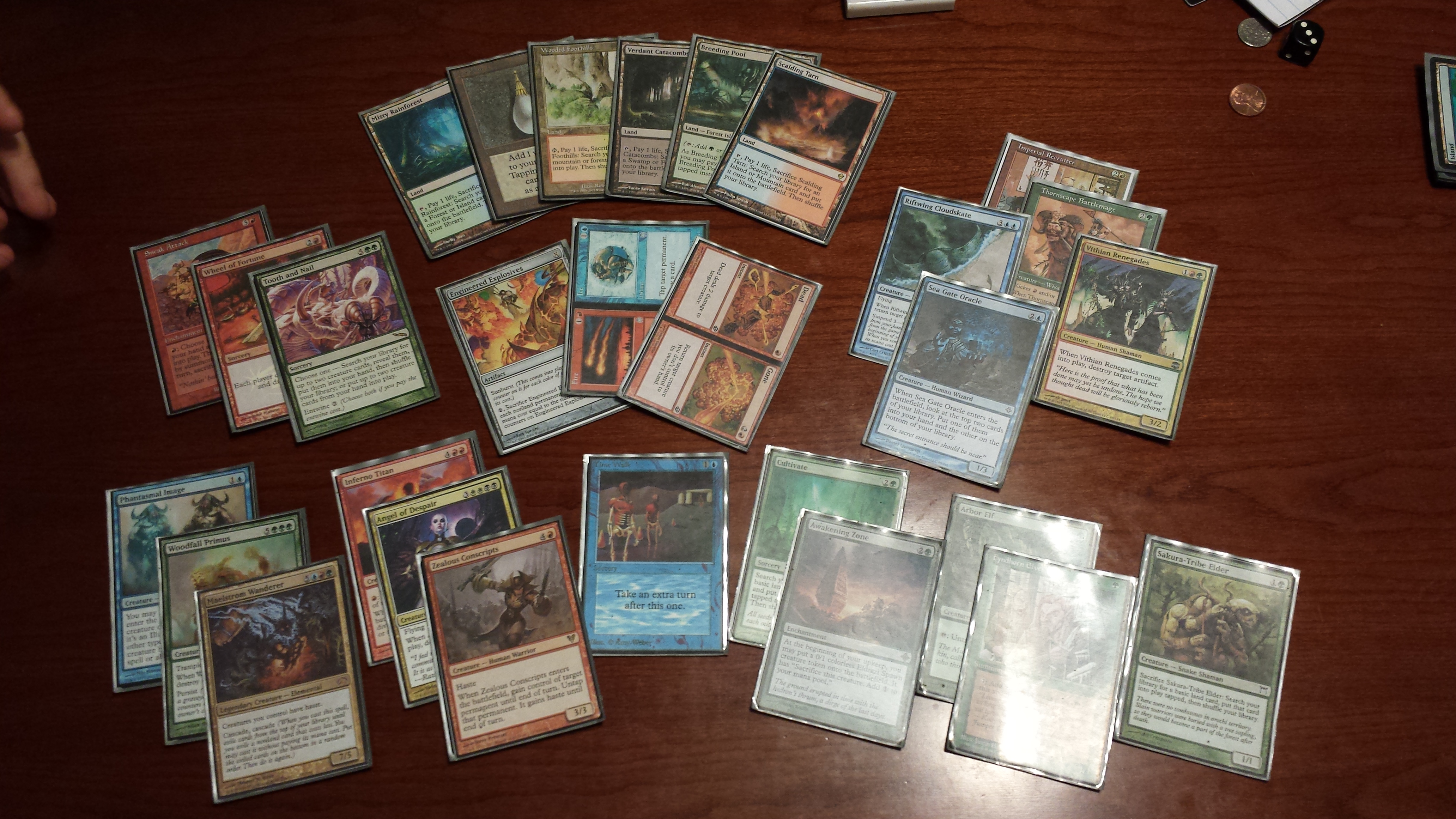Welcome to another edition of Cubers Anonymous! I hope everyone had a chance to check out my first look at Cubermetrics in my last article; people seemed to really enjoy the data, so it’s something we’ll be revisiting in the future. For today, we’re going to switch gears and take a look at some drafting strategy.
Talking actual drafting is something that’s overlooked by regular Cube writers for the most part (myself included), as we tend to key in on talking about card choices for maintaining your Cube rather than your Draft deck. Although that’s fun for those of us that own Cubes, there is a much larger percentage of people that play with Cubes yet don’t own them. They play for the drafting and awesome decks that can only exist in Cube!
Only The Lonely
Jace, the Mind Sculptor. Recurring Nightmare. Lightning Bolt. Armageddon. Sylvan Library. All of these are cards that are consistently picked very early in drafts and don’t take much effort or brain power to excel in any deck where you can cast them. I’m not interested in looking at these cards today. Instead, I’d rather talk about some cards that take a bit more dedication than the pick-and-play group from above.
The group of cards I’ve chosen below all share exactly one thing in common—in the last three months, each card is a card I’ve selected first out of a pack, and each card is a card I’ve had in my sideboard after deck construction. I don’t want to say they’re risk-reward because you can successfully draft around each of these cards if you see them by a certain point in the draft. They’re all both powerful and fun cards, not just one or the other.
Why Draft Edric? You want to draw gobs of cards while whittling away at your opponent’s life total. Edric is always best in a base green deck, where your primary mode of ramping is through mana elves and the like rather than Farseeks and Rampart Growths. The most powerful Edric decks I’ve drafted are close to 70% green and 30% blue, with the blue acting as insurance against overcommitting to the board in the form of bounce and counterspells. You generally don’t want too many blue creatures, as they are far less mana efficient than the green ones and you’ll want to use your mana every turn or hold up counterspells once Edric is in play.
Latest You Can Draft: Pick 30-35. In a normal draft, you can pick him up and slot him in as late as the third pack, assuming you’ve drafted a couple of green fetch lands. Once you have Edric, you don’t need to deviate much from the plan of drafting mana creatures / equipment / Natural Order targets outside of aggressively targeting blue-green dual lands.
What Cards To Target In Draft: Edric’s best companions are cards that you’d already be interested in with your mana creatures, like Craterhoof Behemoth equipment. Green Sun’s Zenith is this deck’s best friend, and Survival of the Fittest / Fauna Shaman isn’t too far away. Though I’m normally shy on Survival of the Fittest / Fauna Shaman, this is the best deck for it, allowing your nature ramp strategy to stay intact whether you have access to casting Edric or not. Even a mediocre card like Worldly Tutor is great in this deck, as the turn you cast Edric you should be able to recoup the lost card you used to tutor him up.
As stated above, Tropical Island and friends are ultra-important in this deck—you want to be able to cast every single green spell on time without cutting yourself off from casting Edric. Tooth and Nail is also a prime target for this deck, as the card drawing from Edric allows for more acceleration, which naturally falls into the ramping plan. The three best targets for those cards are Hornet Queen, Avenger of Zendikar, and Deranged Hermit. Again, Craterhoof Behemoth and Grafted Wargear are fantastic here and deserve to be picked over just about anything that doesn’t cost one, attack, and create mana. Counterspells and bounce spells that don’t require much blue mana like Miscalculation or Repulse are the best targets.
The Downsides: He’s squishy, so you have to have a back-up plan if he never makes it to his first combat step. Luckily he fits into a common deck more easily than any other card we have listed, so the biggest thing you have to watch out for in drafting and deckbuilding is making sure you’re able to get somewhere with your deck without Edric, which is why I recommend attempting a ramp strategy.
Other Options: Since he clearly plays well with tokens, a Bant-esque deck can occasionally work well, though you have to value lands much higher to ensure you can have equal parts of each of the three colors. Decks like this often tend to be more base white, so Edric is more of a double splash than is best. I much prefer Bant with this man:
Why Draft Venser? You probably enjoyed the Harlem Globetrotters as a child because that’s what Venser looks like to your opponent when operating at full throttle. If you enjoy enters-the-battlefield abilities (and you clearly do since you’re reading an article about Cube), then there is somewhere in your heart that loves Venser.
Latest You Can Draft: Pick 20-25. Fortunately if you’re in either white or blue with a touch of mana fixing, you can move towards drafting a Venser deck. Most of the creatures you’re going to have are going to come attached to ETB abilities anyway, so you shouldn’t have to go out of your way to find them. My preferred deck to draft Venser in is Bant so you can pick up all of the best ETB guys. Even if you’re in U/W, U/G, or W/G, Venser is always an easy splash to make all of your other cards better.
What Cards To Target In Draft: Once you have Venser, keeping your curve low is paramount. The goal with this deck is to shove your opponent into an unwinnable position, so you want to be able to protect Venser with removal or counterspells while being able to commit sweet creatures to the board as well. Creatures that pull double duty like Venser, Shaper Savant; Man-o-War; and Aether Adept are key, as are creatures that allow for card selection like Sea Gate Oracle and Eternal Witness. Each of the Titans is great obviously, but Frost Titan is the best since you’ll be able to stop your opponent from interacting with anything you’re doing. Oblivion Ring and Journey to Nowhere become better as well, being able to reset to lock down the best target.
The Downsides: At the end of the day, Venser is a win-more card, and likely your deck is going to be able to operate fine without him. This isn’t necessarily a downside, as Venser is an incredible enhancer to value decks that are already good. It’s easy to get into a groove where you only draft creatures and your mana curve gets clogged at the three and four spot, making it so you can only cast a single sorcery-speed spell a turn.
Other Options: The biggest issue with Venser is that he pairs much worse with black and especially red than the Bant colors. Black offers a handful of Nekrataal like creatures, but ultimately the deck you end up with looks like a worse version of the Bant Venser deck. Red is almost unpairable, as the creatures that fill out most Cubes in the two-to=four range in red don’t have impactful ETB abilities.
Why Draft Sneak Attack? A strategy that can truly emulate a competitive Legacy deck, Sneak Attack allows you to destroy your opponent over the course of a turn or two. Pairs very nicely with ramp strategies as well.
Latest You Can Draft: Pick 10. Seeing Sneak Attack any later than this makes it hard to turn your draft around to account for all the missed picks; Sneak Attack is much tougher to slot into a random deck than other card on this list. If you see it before pick 10, the deck is often so powerful than it’s usually worth it to lose five or six picks to be able to draft around it for the remaining 35+ picks.
What Cards To Target In Draft: Card selections like Ponder, Preordain, and Compulsion allow you to rifle through your deck to set up a hand of Sneak Attack plus a couple of fatties. The best among those to draft are ones that leave behind something when they die at end of turn like Grave Titan and Myr Battlesphere or crush something when they come down like Angel of Despair and Woodfall Primus. Obviously the Eldrazi are the best targets, as you can often set your opponent back to the Stone Age. Phantasmal Image and Phyrexian Metamorph go waaaay up in the pick order because they allow for cheap, huge threats when paired with the Sneak Attack targets.
I like to have around four or five huge creatures in the deck, as you don’t want them to clog up your hand when you don’t have Sneak Attack but want to enough to ensure you can put a couple in play at once.
Show and Tell, Eureka, and Tooth and Nail are the best other fatty helpers. I like targeting noncreature based ramp like Cultivate and Farseek to have more resilient ramp since you can’t utilize mana elves like you can with Edric. Versatile bounce and burn like Magma Jet and Withdraw are great at slowing down attackers as well as advancing your plan. Dead // Gone is the best of both worlds because you can return your Sneaked attacker back to your hand for next turn as well.
The Downsides: Well, you need Sneak Attack or one of the lesser effects to win, so drafting cards like Sea Gate Oracle and Wall of Blossoms help mitigate the damage before you draw one. There will be games that you simply don’t have one and die with Angel of Serenity and Griselbrand in your hand because you can’t produce a single white or black mana.
Other Options: Though I like to pair green and blue with the obviously red Sneak Attack the best, white and black aren’t bad either. White allows for sweet interactions like Enlightened Tutor and Academy Rector to help get access to your best card along with castable and Sneakable token-makers like Cloudgoat Ranger and Geist-Honored Monk (but not Scion of Vitu-Ghazi kids!). Black lets you go the also sweet route of reanimating your dead Sneak creatures. The B/R version is higher-variance but also higher-powered since you’re able to attack from the graveyard as well.
The ability to mix and match several of these components makes Sneak Attack a solid pair with most color combinations, but just remember to get your fixing if you go more than two colors!
Why Draft Tez? He’s a tough-to-remove planeswalker that approaches (and in some cases exceeds) the power level of Jace, the Mind Sculptor when you have a dedicated deck around him. Each of his three abilities is incredibly powerful and can ultimate almost instantly after entering the battlefield.
Latest You Can Draft: Pick 10. Like Sneak Attack, Tez is tough to recover from missing too many picks without him in mind. Tezzeret really is best in a U/B deck, so if you’re not already there by the middle of the first pack, you may want to let him go by.
What Cards To Target In Draft: Most people incorrectly think that you just draft any artifact you see when you’re on the Tez train. Although you do want your deck to have minimum thirteen artifacts, you really want to target zero-, one-, and two-mana artifacts that make mana over literally everything else. Everything. Else. You want to ensure that you can +1 Tez, hit something every time, and cast that card along with your draw step card every turn. Versatile artifact like Staff of Domination and Phyrexian Metamorph are the best non-mana producers you can have. This is the best possible Vedalken Shackles deck for obvious reason. As for nonartifact spells, Damnation is fantastic, as is Looter il-Kor and Impulse to find Tez himself. Tinker is pretty obvious.
The Downsides/Other Options: For this entry I’ve listed them together. You’re either in with a fantastic deck or out with a rough-looking pile that may struggle to win a game. You have to be so incredibly disciplined in the drafting Tezzeret that you can’t afford to deviate from the plan at all. If you stay in your lane, you’re rewarded by having one of the best possible decks in the draft. You can add a third color to blue and black if you stumble on fixing, but my most successful decks have strictly been those two colors.
There is clear crossover with Metal Worker and Tinker decks for card choices, so having access to either of those two cards never hurts. The difference between a dedicated Tinker deck and a dedicated Tezzeret deck is that you’re trying to get as big a creature in play as possible with Tinker and with Tezzeret you’re trying to put as many artifacts into play as possible.
I hope you enjoyed looking at these narrow-yet-powerful cards and the archetypes they create. There are surely more than this, so share some of your favorites in the comments section!
Thanks for reading. You didn’t think you’d be leaving without seeing a deck featuring one of these cards, did you?
Draft my Cube on CubeTutor.com!
@JParnell1 on Twitter
Official Facebook Cube Drafting Page

